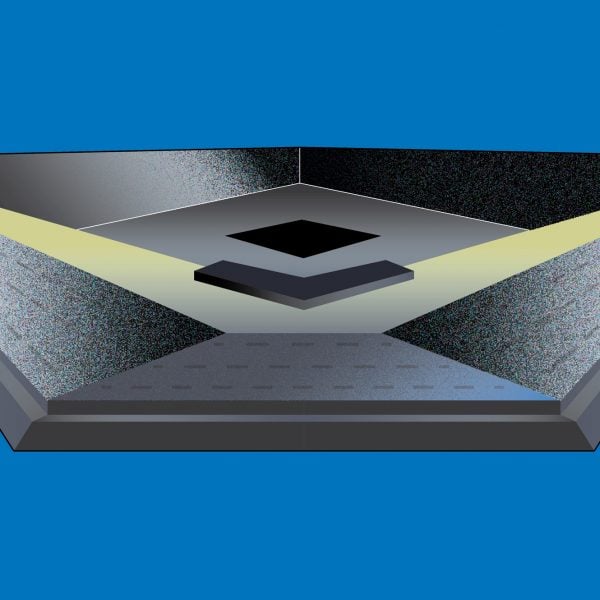Our 21st-Century Architecture: 25 Years 25 Buildings pick for 2011 is the National 9/11 Memorial, designed by Michael Arad of Handel Architects – a powerful symbol of loss, remembrance and healing.
The most significant building of 2011 was not actually a building – in fact, it was almost the opposite. Few events loom so large in the 21st century as the terrorist attacks that destroyed the World Trade Center towers in September 2001.
Completed 10 years later, the National 9/11 Memorial takes the form of two granite-lined reflecting pools that trace the former footprints of the Minoru Yamasaki-designed skyscrapers.
It represents an architecture of absence, a sort of wound in the urban fabric that pointed to the horror of that day and its legacy.
Taking cues from other abstract modern monuments, it signalled a sense of closure in the aftermath of the attacks, a new era for New York City and the complexities of rebuilding in such a dense environment.
After local officials decided that there should be no buildings on the site, in 2004 a call was put out for designs for a memorial, in line with the masterplan by American architect Daniel Libeskind.
The competition, which attracted almost 5,200 entrants, was won by a relatively unknown Israeli-American architect named Michael Arad.
His design, called Reflecting Absence, took a minimalist, non-representational approach to memorialising the tragedy, calling to mind both Maya Lin’s Vietnam War Memorial and Peter Eisenman’s Holocaust Memorial in Berlin.
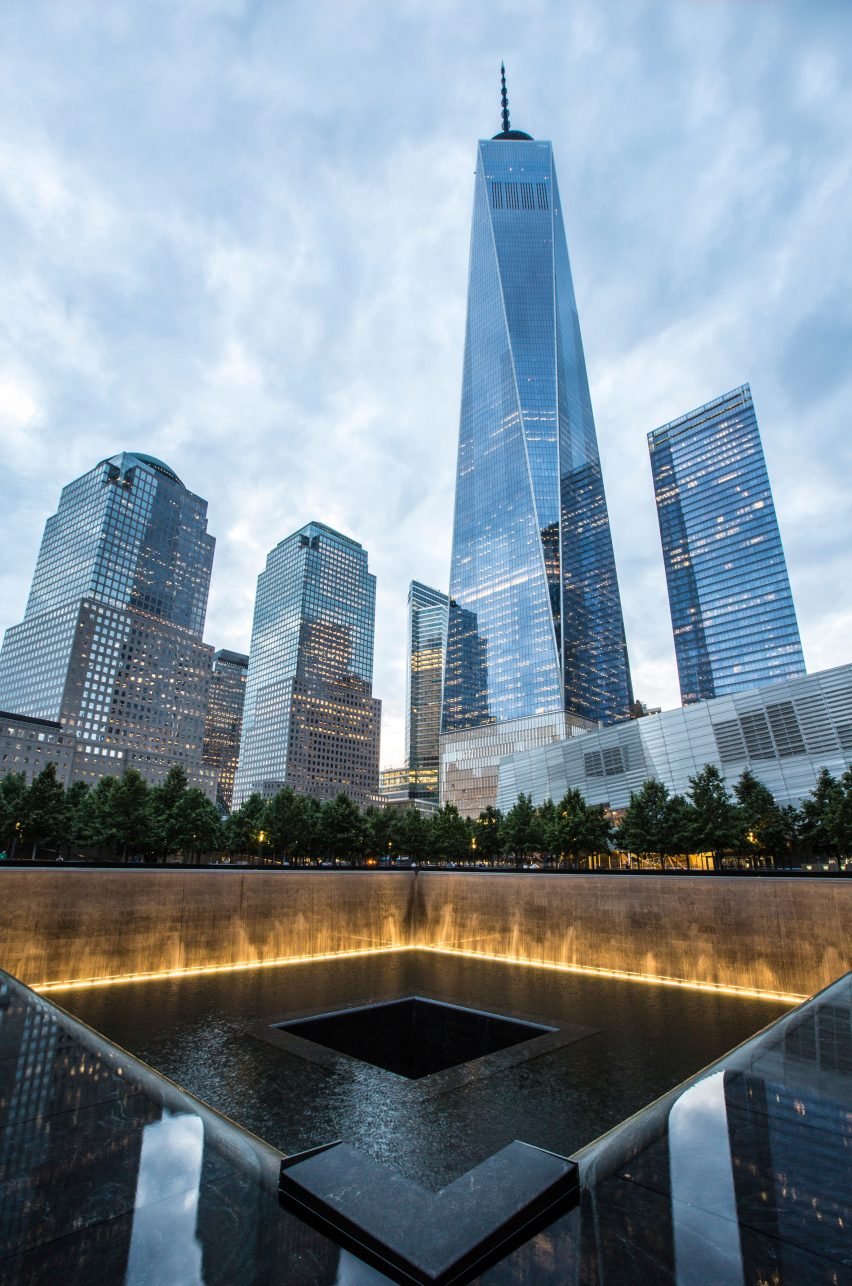
Insistent on sparing no expense for the memorial and the redevelopment around it, the local and state governments set up the Lower Manhattan Development Corporation (LMDC) to oversee the distribution of funds and construction.
Soon, the complexities of the infrastructure downtown, the need to appeal to the public and the families of victims and the multiple different agencies, politicians and other architects involved with the project created difficulties for the memorial. This was compounded by Arad’s apparent intransigence on any edits to his design.
A New York magazine piece in 2006 reported Arad feuding constantly with his primary collaborators Max Bond Jr of Davis Brody Bond and landscape architect Peter Walker, as well as with government officials and architects Libeskind and Santiago Calatrava.
Its mysterious disappearance captures and holds your attention in a way most unusual for the static medium of conventional architectureMartin Filler for Slate
“Design, it seemed, couldn’t create unity; it led only to intractable differences of taste,” wrote Ted Loos, emphasising the complexity of such a public project.
Many of the planned skyscrapers at the Ground Zero site also seemed to be stalling at the time due to power struggles between developers and the government.
However, Arad was embedded into local studio Handel Architects, where he still works today, and progress on the memorial went forward, in part due to championing by then-mayor Michael Bloomberg.
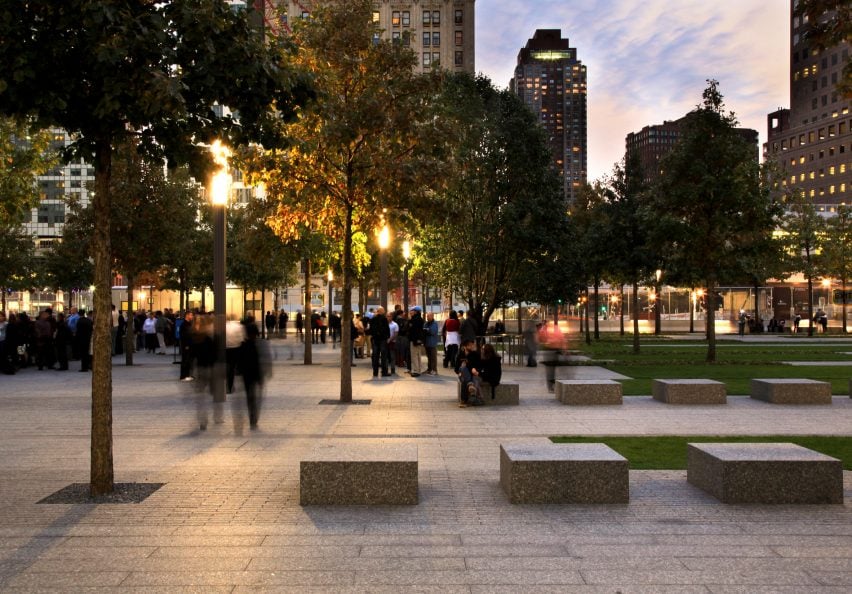
Today two massive granite-and-steel lined reflecting pools sit on a site surrounded by groves of swamp oak trees. All around the two pools, waterfalls constantly flow, with the water running over serrated weirs, flowing eventually into another void in the bottom.
Around the perimeter of the pools are bronze parapets with names of victims engraved clear through, backlit and temperature-controlled so the metal is never too hot or cold to touch.
Surrounding the pools, the whole of the public plaza was lifted above street level on a concrete and steel podium topped by granite pavers.
On one side of the grove is a sculptural, Snøhetta-designed pavilion that provides entry to the subterranean 9/11 museum designed by Davis Brody Bond and Aedas.
Despite the confusion and lack of coordination among the stakeholders, the memorial was widely considered a success by critics.
Martin Filler was astounded at “how this stunning result emerged from such a fraught and contentious process”.
“The propulsive aural and visual excitement of the three-story-deep waterfall and its mysterious disappearance captures and holds your attention in a way most unusual for the static medium of conventional architecture,” he wrote.
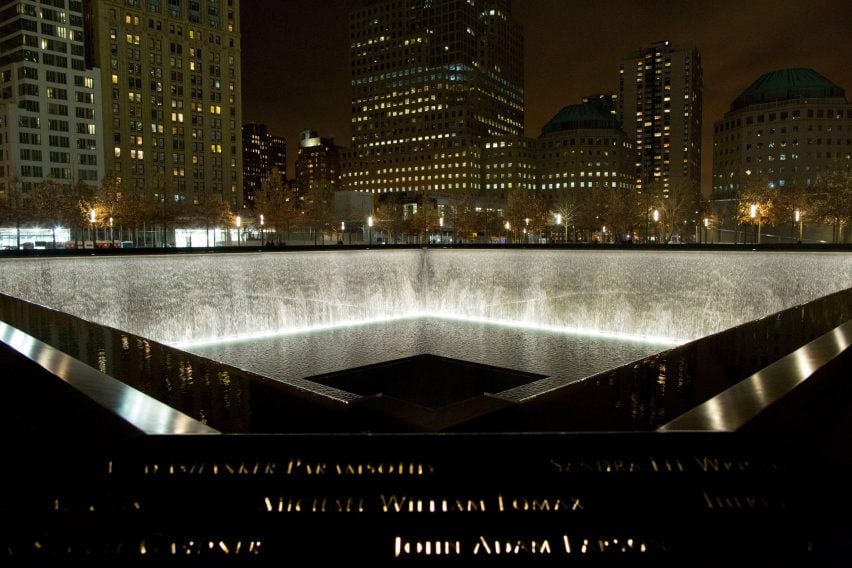
More than 10 years on, it seems that the complex public-private reviews for the memorial led to its strength as a piece of the built environment.
Reflecting on the legacy of 9/11 in 2021, Libeskind told Dezeen he thought the destruction in New York had made people pay more attention to architecture, placing more emphasis on citizen input for larger projects.
It might be seen as fitting, then, that the 9/11 memorial seems to exemplify this public input and complexity.
Arad’s design functioned beyond the scope of normal client-architect relationships – it was constructed not just for the local stakeholders, but for the whole city, and the nation. It is architecture as wound, reminder and healing.
You wouldn’t mistake it for an ordinary park or urban piazza, but it isn’t a cemetery, eitherPaul Goldberger for the New Yorker
Writing for the New Yorker upon its opening, critic Paul Goldberger said that the memorial had managed to somehow turn the void of the tallest buildings in the city into something “monumental”.
“You wouldn’t mistake it for an ordinary park or urban piazza, but it isn’t a cemetery, either,” considered Goldberger.
“You feel a sense of dignity and repose, and you see the shapes of the renewed city in the rising skyscrapers, as you should.”
In the 10 years since the memorial’s completion, most of the remaining developments around the structure have gone in, and as Goldberger notes, life in Lower Manhattan has gone on.
The memorial represents a sense of architectural perseverance despite complex stakeholder input, but it also embodies a massive historical shift.
The state of the world has been indelibly affected by 9/11, with wars ongoing, surveillance ever-increasing and trust eroding, and these two voids serve as markers of that shift – of who, and what, we’ve lost.
Did we get it right? Was the The National 9/11 Memorial the most significant building completed in 2011? Let us know in the comments. We will be running a poll once all 25 buildings are revealed to determine the most significant building of the 21st century so far.
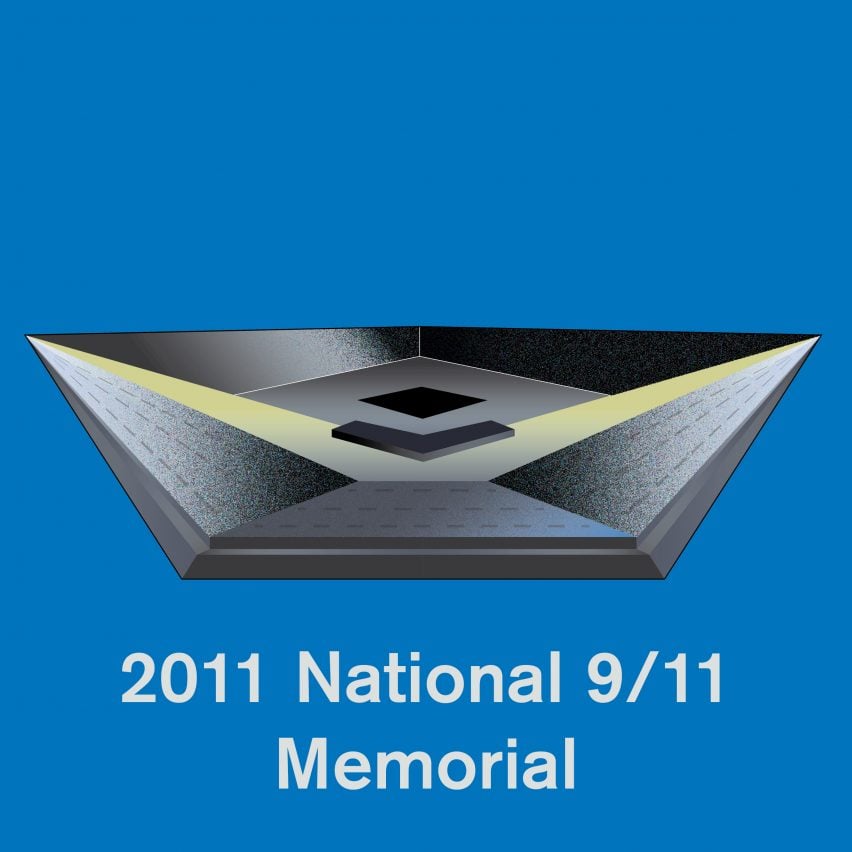
This article is part of Dezeen’s 21st-Century Architecture: 25 Years 25 Buildings series, which looks at the most significant architecture of the 21st century so far. For the series, we have selected the most influential building from each of the first 25 years of the century.
The illustration is by Jack Bedford and the photography is by Nick Merrick unless stated otherwise.
21st Century Architecture: 25 Years 25 Buildings
2000: Tate Modern by Herzog & de Meuron
2001: Gando Primary School by Diébédo Francis Kéré
2002: Bergisel Ski Jump by Zaha Hadid
2003: Walt Disney Concert Hall by Frank Gehry
2004: Quinta Monroy by Elemental
2005: Moriyama House by Ryue Nishizawa
2006: Madrid-Barajas airport by RSHP and Estudio Lamela
2007: Oslo Opera House by Snøhetta
2008: Museum of Islamic Art by I M Pei
2009: Murray Grove by Waugh Thistleton Architects
2010: Burj Khalifa by SOM
2011: National 9/11 Memorial by Michael Arad
This list will be updated as the series progresses.

